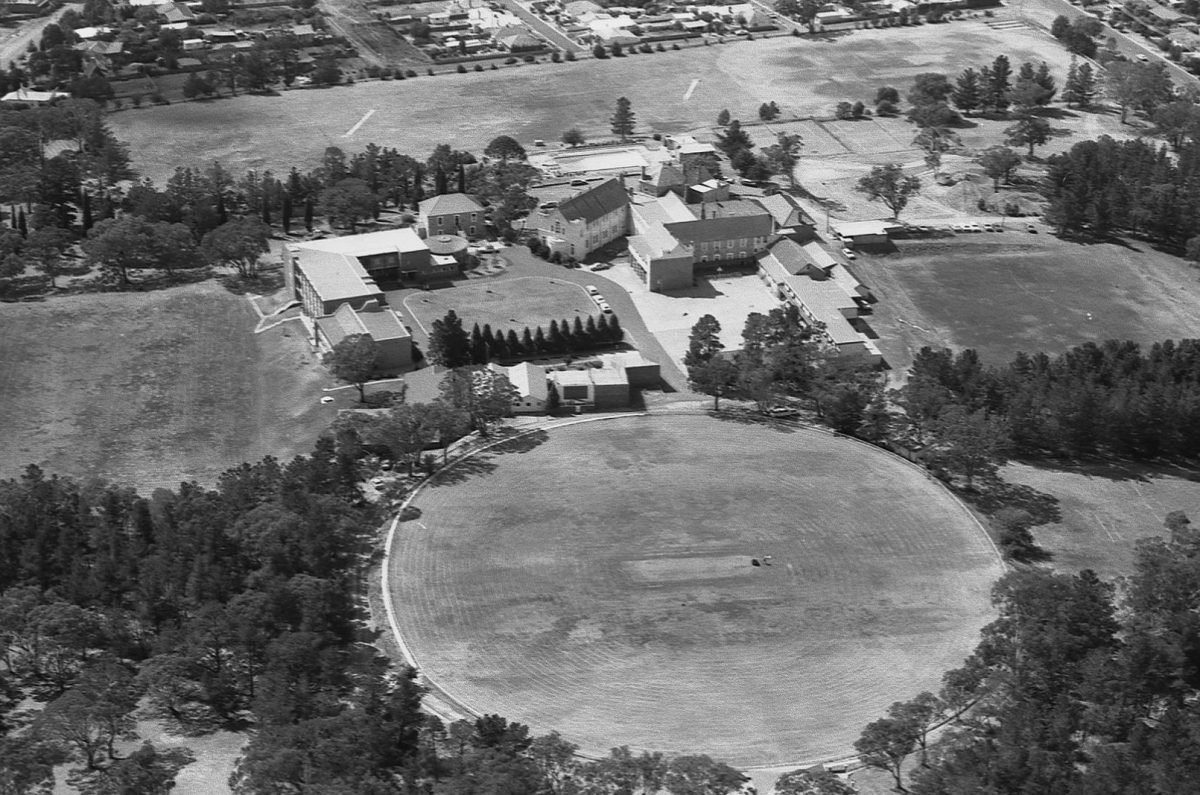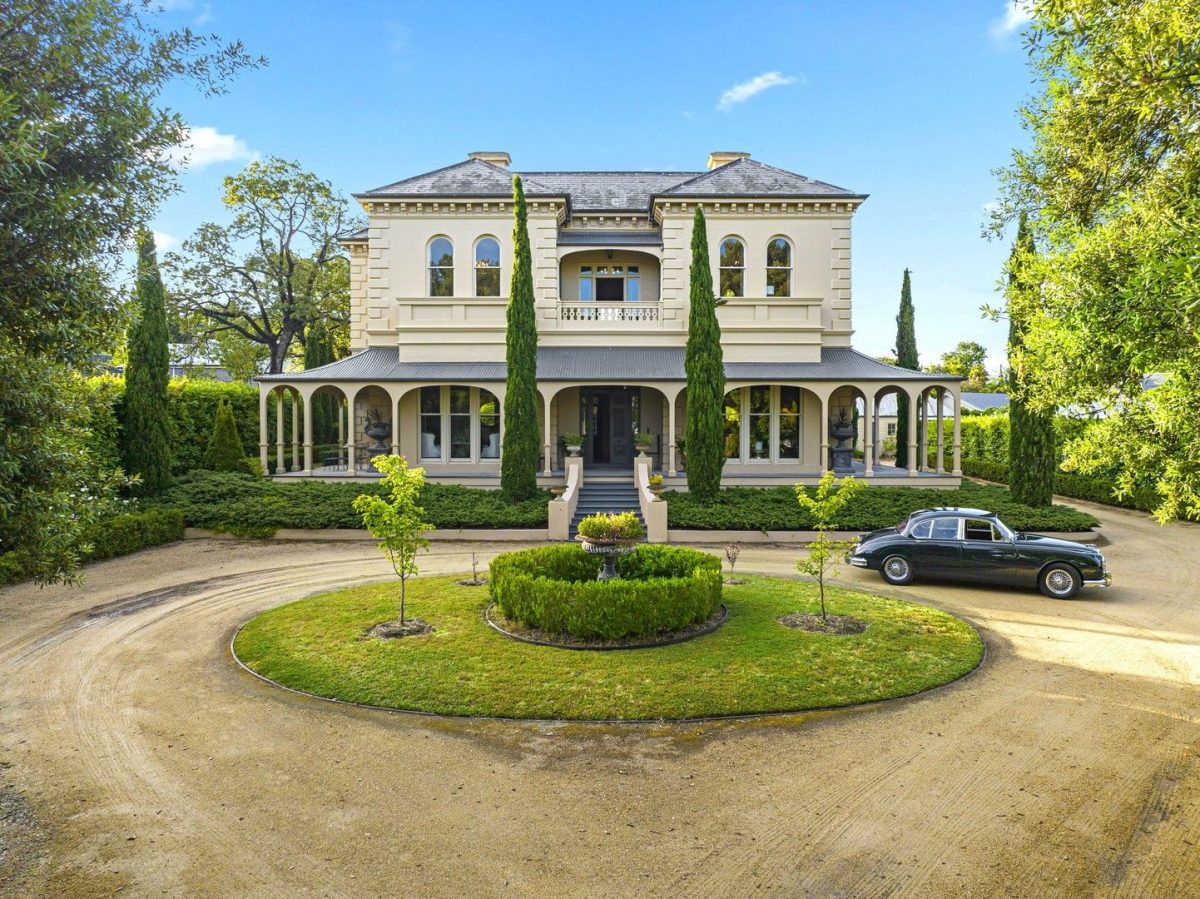
Frank Leahy, his wife Doris and their seven children. Photo: Susan Leahy collection.
His chook pens were almost palatial. His brick pig pens were the talk of the district. The cricket oval he bankrolled rivalled the Sydney Cricket Ground. And his gleaming chambers in Montague Street, Goulburn, remain an architectural delight.
Yet the creator of all these wonders grew up dirt-poor after his family’s Bundengore hotel went broke.
As a boy, Frank Leahy bought and traded a few poddy calves and milked cows for the nuns, who banked his money. It was one of the best investments the Catholic Church ever made.
He became a canny stock and station agent who pushed his luck to the limits. Leahy opened a stock and station agency at Bungendore and once amassed more than 80,000 sheep, which he grazed on the ”long paddock” beside roads.
Drought-ravaged farmers were grateful to give him their starving stock. He bought more sheep for next to nothing. Weeks after gathering his huge flock, the drought broke.
Early in 1933, six men with horses, ploughs and scoops set about clearing and levelling a tree-covered hill above St Patrick’s College in Goulburn under Leahy’s directions. At the time, the 42-year-old flamboyant grazier had his five sons enrolled at the college.
He had invested £590 – equivalent to about $56,000 today – on the new oval. He gave another £60 for the base of a cricket pitch.
In his 2008 book Up on the Hill: A History of St Patrick’s College Goulburn, historian and teacher David Bollen describes Leahy as the college’s most benevolent contributor, and the oval, later named Wexted, became one of the college’s chief adornments. The press at the time said it was equal to any other in the state.

An aerial view of Wexted Oval in 1982. Photo: Leon Oberg.
His granddaughter Susan Leahy said her father George told her Wexted Oval was built to the same dimensions as the Sydney Cricket Ground. Leahy Senior also bankrolled the oval’s grandstand and entrance driveway.
He lavished Marian Homestead (now South Hill) with improvements, including those extraordinary chook pens, which later attracted government funding for restoration. Owned by the Sisters of Mercy, the farm’s dairy cows were taken to Leahy’s Wagga property each winter.
Leahy donated £1000 to the Inverolochy Agricultural College, near Lake Bathurst, run by the Christian Brothers, and the first X-ray unit for the St John of God Hospital in Goulburn. All the while he was adding to his extensive landholdings. Susan says his life was spent either on or off the wagon, and alcoholism ran through the family.
This did not stop him from buying up properties around Wagga, where he was a notable donor for that city’s Lewisham Hospital. Much of his life was spent at Overdale, between Wagga and Junee, where that famous pig pen was built, or Elsmlea, his first property at Bungendore. He also had a plush townhouse at the top of Auburn Street.

Hurstville in Cowper Street, Goulburn. Photo: Ray White Real Estate.
When he died in 1955, his estate worth £348,000 (about $14 million today) included several grazing properties and a block of flats in Goulburn.
Leahy had created the flats after buying and remodelling the Bulwarra mansion in Cowper Street. His wife and the mother of his seven children, Doris, was left a life interest in one of the flats. His sons received farms, his two daughters received houses.
“His girlfriend of 13 years in Wollongong got a block of units,” Susan said.
But the lion’s share of the estate was left to various orders of the Catholic Church, triggering a dogged battle through the courts that is still referenced in legal debates today.
The family, joined by the NSW Attorney General, challenged the will but their appeals in the Supreme Court, High Court and Privy Council were all unsuccessful.
Wexted Oval is but one of Frank Leahy’s lasting legacies. Another is the eye-catching and much-studied Elmslea Chambers in Montague Street. He built that because he had colleagues with chambers in Montague Street and wanted a more striking one than theirs.
The 1933 Art Deco building by architect Mr L P Burns was one of the first in Australia to use coloured polychrome terracotta in its facade. The central panel above the entrance has a ram’s head. Two of the panels beneath the windows suggest the rising sun.

Elmslea Chambers’ polychrome terracotta panels in Montague Street, Goulburn. Photo: John Thistleton.
Elmslea’s interior is as impressive, with silky oak and Tasmanian blackwood parquetry in the main office and terrazzo marble flooring with Art Deco motifs in the entranceway.
Whatever Frank Leahy built, it was exceptional, except for those flats in Cowper Street, which years later, in the 1980s, filled with rabble-rousing tenants who became their neighbours’ worst nightmare. Mercifully, Bulwarra was tastefully restored to its original layout and renamed Hurstville, which changed hands last year for $3.1 million.






